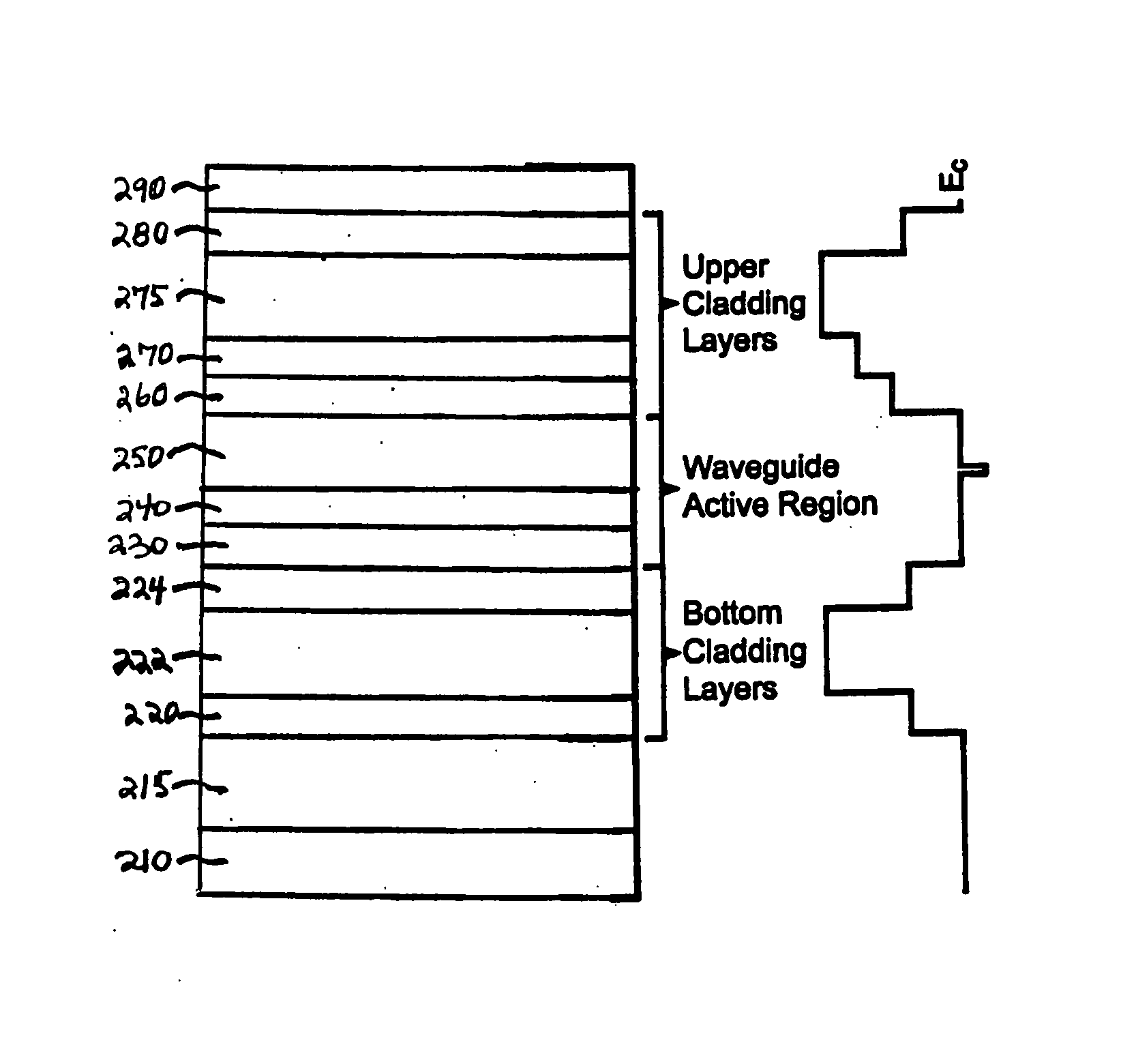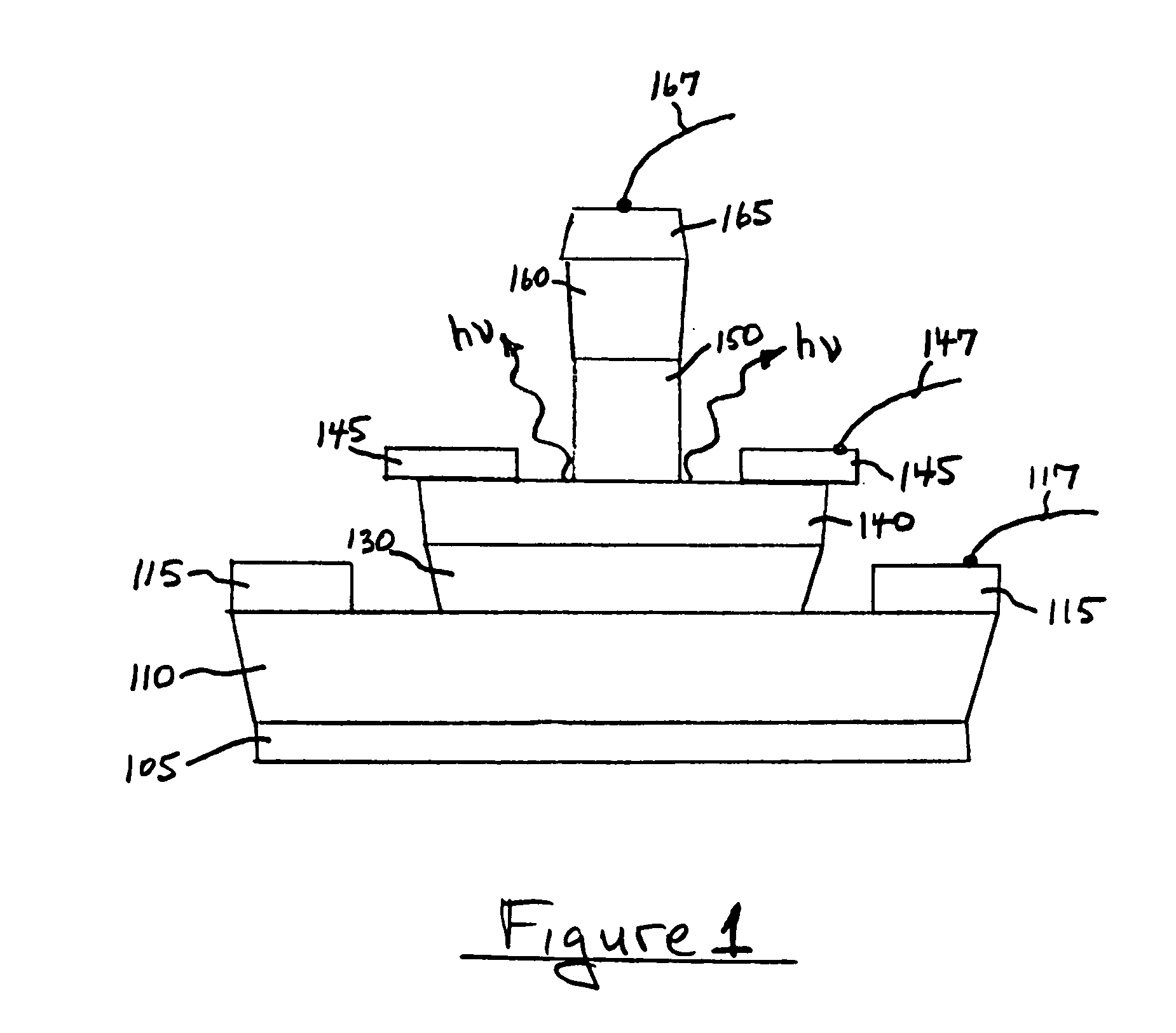Semiconductor laser devices and methods
- Summary
- Abstract
- Description
- Claims
- Application Information
AI Technical Summary
Benefits of technology
Problems solved by technology
Method used
Image
Examples
Embodiment Construction
[0033]FIG. 1 illustrates a device as set forth in the above-referenced copending application Ser. No. 10 / 646,457. A substrate 105 has the following layers disposed thereon: subcollector 110, collector 130, base 140, emitter 150, and cap layer 160. Also shown are collector metallization (or electrode) 115, base metallization 145, and emitter metallization 165. Collector lead 117, base lead 147, and emitter lead 167 are also shown. As described in the referenced copending Application, the collector layer 130 comprises 3000 Angstrom thick n-type GaAs, n=2×1016 cm−3, the base layer 140 comprises 600 Angstrom thick p+ carbon-doped compositionally graded InGaAs (1.4% In), p=4.5×1019 cm−3, the emitter layer 150 comprises 800 Angstrom thick n-type InGaP, n=5×1017 cm−3, and the cap layer comprises 1000 Angstrom thick n+ InGaAs, n=3×1019 cm−3.
[0034] As described in the referenced copending Application, for conventional PN junction diode operation, the recombination process is based on both a...
PUM
 Login to View More
Login to View More Abstract
Description
Claims
Application Information
 Login to View More
Login to View More - R&D
- Intellectual Property
- Life Sciences
- Materials
- Tech Scout
- Unparalleled Data Quality
- Higher Quality Content
- 60% Fewer Hallucinations
Browse by: Latest US Patents, China's latest patents, Technical Efficacy Thesaurus, Application Domain, Technology Topic, Popular Technical Reports.
© 2025 PatSnap. All rights reserved.Legal|Privacy policy|Modern Slavery Act Transparency Statement|Sitemap|About US| Contact US: help@patsnap.com



